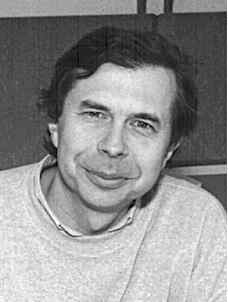

 The overall ACD objective is to foster improved understanding of chemical
processes that affect the Earth's atmosphere. This is accomplished through
interdisciplinary studies that probe the complex interactions between oceans,
land, ecosystems, and the atmospheric interface they share. ACD serves
the broader scientific community through model development, collaborative
studies, implementation of aircraft instrumentation, and development of
satellite data and instrumentation. ACD maintains a balance between theoretical
and experimental research techniques while developing a hierarchy of numerical
models to both interpret measurements and extend our understanding to future
predictions.
The overall ACD objective is to foster improved understanding of chemical
processes that affect the Earth's atmosphere. This is accomplished through
interdisciplinary studies that probe the complex interactions between oceans,
land, ecosystems, and the atmospheric interface they share. ACD serves
the broader scientific community through model development, collaborative
studies, implementation of aircraft instrumentation, and development of
satellite data and instrumentation. ACD maintains a balance between theoretical
and experimental research techniques while developing a hierarchy of numerical
models to both interpret measurements and extend our understanding to future
predictions.
ACD was involved in a large number of field studies during FY96 where
many new instruments were successfully applied. Our new airborne
OH/H2SO4/MSA
instrument was flown for the first time on the Aerosol Characteristics
Mission (ACE-I) and later in the Pacific Exploratory Measurements (PEM-Tropics)
study with great success. This instrument provided the first aircraft
measurements
of OH and H2SO4 in the lower and mid troposphere
and the first real-time measurements of gas phase MSA. Another new instrument,
a two-channel spectroradiometer, was also constructed, calibrated, and
flown on the NASA DC-8. Participation in the Vortex Ozone Transport Experiment
(VOTE) and Tropical Ozone Transport Experiment (TOTE) investigated transport
from the polar vortex to mid-latitude regions and possible heterogeneous
processes. Participation in Subsonic Aircraft: Contrail and Cloud Effects
Special Study (SUCCESS) focused on particle formation and aerosol chemical
processes in cirrus clouds, wave clouds, and aircraft contrails. An airborne
TDL system was developed and first deployed in the North Atlantic Regional
Experiment (NARE) where aircraft measurements of HCHO were acquired as
part of a suite of photochemically-related species and parameters to study
O3 photochemistry and transport processes. A sensitive real-time
selected ion chemical ionization mass spectrometric (SICIMS) measurement
technique for HNO3 was also recently developed and field tested.
This was also the year for the first Stratosphere-Troposphere: Radiation,
Aerosols, and Ozone (STERAO) field intensive where a combination of aircraft,
radars, lightning interferometer, and ground based field mills were involved.
A four channel chemiluminescence instrument was designed and built to fly
on the WB-57F. We also developed a tunable diode laser (TDL) for STERAO
to simultaneously measure CO and N2O and help distinguish between
transport and chemical and physical transformations. Lower altitude regions
were probed with the NOAA P-3 aircraft while the anvil region of the storms
were probed with the University of North Dakota Citation jet. A variety
of models from NOAA, NCAR's MMM Division, and the University of Maryland
were used for storm prediction and analysis.
Experiment for Regional Sources and Sinks of Oxidants (EXPRESSO) efforts
included aircraft test flights, infrastructure development, and field
measurements
at a field site in the Northern Congo. Multiple visits to Africa resulted
in the building of a road, setting up a field laboratory, constructing
a 65-m tower through the forest canopy, and characterizing the forest
landscape.
Initial measurements of methane fluxes, VOC emissions from vegetation,
and isoprene at the field site indicated that hydrocarbon fluxes from this
site are lower than expected.
Modeling studies to develop and use a range of models, from the mesoscale
to the global scale, have advanced considerably in the past year, including
the implementation of detailed chemistry in the Climate System Model (CSM).
In addition, research studies have focused on topics such as the impact
of biomass burning on tropospheric ozone, effects of subsonic aircraft,
and the increases in surface radiation and changes in tropospheric chemistry
due to ozone depletion.
Development of satellite instrumentation and algorithm has also advanced
together with concurrent scientific analyses. A range of questions relating
to the database from the Upper Atmosphere Research Satellite (UARS) have
been addressed, including development of algorithms to infer information
about aerosol distributions that are critical for stratospheric chemistry.
Through this coordinated research and implementation approach, ACD continues
to serve the scientific objectives of a variety of national and international
programs of interest to the broad community, particularly the Global
Tropospheric
Chemistry Program (GTCP).
|
|
FY 1996
Publications
Community Service Staff, Visitors & Collaborators |
![]()
 Back |
 UCAR |
 NCAR |
 National Science Foundation |
 ACD home |